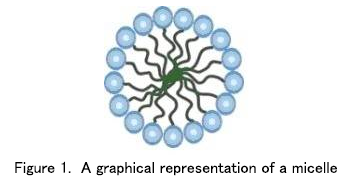
Whether you are taking medications or dietary supplements or using cosmetics or skin care products, you are affected by the concept of bioavailability. Having a basic comprehension of bioavailability does not require you to become a biochemist, but it does require you to have a common sense approach to choosing your products wisely. Bioavailability essentially refers to the proportion or amount of any given active ingredient in a product that can be absorbed by the body. Certain innovative technologies, such as emulsions, liposomes, and micelles, are used to enhance the bioavailability of personal care products, such as dietary supplements, medications, and skin care products, among others. Additionally, bioavailability is affected by intra- and inter-individual factors (Bohn et al., 2017), such as dietary habits (Borel, 2003), disease status (Annibale et al., 2002; Azar et al., 2011), possibly exercise (Kitamura et al., 1997; Wang et al., 2008), overweight or obesity (Wang et al., 2008), alcohol use (Kitamura et al., 1997; van der Gaag et al., 2000; Walmsley et al., 1998), smoking (Wang et al., 2008), use of illicit drugs (Ryden et al., 2012), age (Casso et al., 2000), the microbiome (Bohn et al., 2015; Sayin et al., 2013; and genetic factors (Borel et al., 2012; Borel et al., 2015). Typically, we need the nutrients that we consume to be assimilated into mixed micelles as a necessary step before they are transported into the cells, which as far as the state of science shows occurs primarily in the small intestine (Bohn et al., 2017).
You might be asking yourself, “What is a micelle?” Again, if you are not a biochemist, then you may never have even heard of this term. We will discuss the biological implications of micelles below, but meanwhile micelles are very important compounds that our digestive system uses to allow us to ultimately absorb fat-soluble molecules. A micelle is formed with a fatty acid, a salt of a fatty acid, phospholipids, or other similar molecules (Garavito & Ferguson-Miller, 2001). A micelle essentially has the active ingredient in the inside of a molecule surrounded by an outer shell that is typically of a fat, or lipid, material. See Figure 1 for a graphic representation of a micelle. When we eat fat-soluble substances, the body’s digestive, gastric, and small intestine phases ultimately result in the creation of micelles that allow these nutrients to be absorbed into the bloodstream to be utilized by our cells (Bohn et al., 2017). Otherwise, they would be excreted into the urine and not be used for our health.

Let us discuss some key points about the term bioavailability and how it relates to your food, dietary supplements, and ultimately, your health.
Products that have been micellized with all-natural ingredients provide your body distinct benefits. You now have the ability to absorb these active ingredients approaching 100% bioavailability, which means that you get the most for your health and your dollar. Compared to other inferior products on the market, one that has been micellized will be superior in every measurable way. All-natural micellization technology essentially replicates what your small intestine does! Thus, this technology builds on the beauty of Mother Nature’s design for your benefit through better product bioavailability.

John E. Lewis, Ph.D.
Associate Professor, University of Miami
Titles:
Associate Professor of Psychiatry and Behavioral Sciences at the University of Miami Miller School of Medicine
Director of Research for the Center for Complementary and Integrative Medicine at the University of Miami Miller School of Medicine
Advisor, Diplomat, and Faculty member of the Medical Wellness Association
Education:
1990 B.S., Business Administration, University of Tennessee
1992 M.S., Exercise Physiology, University of Tennessee
1995 Ph.D., Education and Psychological Studies, University of Miami
・No.12 BioBran – One of the most widely studied and potent immunomodulators known to science
・No.11 Alpha lipoic acid is crucial for boosting glutathione production, particularly for the elderly
・No.10 Magnesium is important for cardiovascular health
・No.8 Cow’s milk consumed by humans: Necessary for health or silent purveyor of disease?
・No.7 Are probiotics useful for modulating the microbiota-gut-brain axis?
・No.2 Is eating a whole-food, plant-based diet the key to overall health and a longer life span?
・No.1 Bioavailability and Absorption are Two Crucial Components to the Quality of Any Dietary Supplement